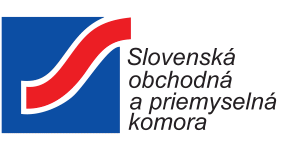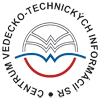Summary:
A German SME developed an automated, modular and flexible clamping system which prevents the deformation of large and thin-walled workpieces. Advantages include its reusability, rapid provision time and the steadiness of workpieces. This reduces defect production and allows for cost and time savings. Machining and manufacturing companies from various fields are sought for commercial agreements with technical assistance. Research agreements with industrial or research partners are also possible.
Description:
The professional clamping of workpieces is crucial for successful machining results. This holds especially true for thin-walled workpieces such as turbine castings, sealing ring components, flange connection components or industrial process drums where an insufficient or inappropriate clamping causes vibration and deformations of the workpieces during the machining process. The high degree of defect production causes significant costs and time loss for machining companies. Moreover, conventional clamping systems for large and thin-walled workpieces are not only error-prone but also very expensive.
A German SME has developed an automated, modular, flexible and hydraulic clamping system which can solve these problems and optimize the production process of large and thin-walled workpieces. The company is an academic-spin-off of a renowned German research institute for production technology with a scientific background in research on vibration-damping clamping systems for complex and unstable workpieces in particular.
The clamping system consists of adjustable and reusable modules and is completely automated. It works with a floating clamping principle by which the individual clamping elements of the system align with the geometry of the workpiece without deforming it. The floating elements provide the clamping system to be particularly suited for large and thin-walled workpieces which can only be clamped with a great deal of effort using conventional clamping methods.
In the first step, the clamping jaws of the individual hydraulic modules adapt to the geometry of the workpiece without deforming it. The contact force is seamless variable. In the second step the clamping jaws are locked in their position with a significantly higher clamping force. Because the workpiece is not deformed, it can be clamped at many points, which provides excellent support and vibration damping. The device is a hydraulic clamping system that is centrally driven and can therefore be easily automated in any production environment. With the hydraulic system, large workpieces can be clamped in just a few seconds, even with hundreds of clamping points. The clamping forces of the hydraulics always remain reliably steady at the set value. Operating errors are excluded and the production process is very stable, which significantly reduces the process risk. Once the workpiece is positioned, it can be fixed with a pressure of up to 200 bar. Each element resists a load more than 10 kN and therefore allows the full process power to be applied in the machining process. The clamping system is modular so that by a simple changeover different workpieces can be clamped with the same clamping system - long preparation times and investments in special fixtures can be omitted.
For retooling the system just the base plates adapted to the respective workpiece geometry have to be exchanged. Therefore the device is very economical as all hydraulic components can be reused.
Machining and manufacturing companies from various fields, especially from the turbine manufacturing industry, apparatus engineering and pump and the additive manufacturing industry are sought for commercial agreements with technical assistance. The necessary technical knowhow will be delivered by the German SME. The German company can also adjust the existing product to specific customers' needs in order to produce tailor-made solutions. Technical cooperation and research agreements with companies or research institutions to further improve the technology in the framework of EU-funded projects are also possible.
Type (e.g. company, R&D institution…), field of industry and Role of Partner Sought:
Partners sought are CNC (Computerized Numerical Control) machining and manufacturing companies from the metal or 3D-printing sector, especially from the turbine manufacturing industry, apparatus engineering and pump and the additive manufacturing industry. Task to be performed is the integration of the automated clamping system into existing machining processes. Possible partners are also foundrys that machine their parts after casting. Other possible partners are machine builders and machine suppliers which can integrate the system in key-turn solutions for end-users.
Within commercial agreements with technical assistance the German company will offer the technological know-how needed to integrate the system in existing machining solutions or adjust it to customers’ individual needs.
Research agreements with companies from the above-mentioned areas or with research institutes to further improve the technology, e.g., in the framework of EU-funded projects are also possible and would have to be discussed.
The German SME offers to develop and present a first clamping for a desired workpiece free of charge as a concept in a web meeting, in order to demonstrate the capabilities and the economic potential of the system using a concrete example. A non-disclosure agreement can of course be concluded before a CAD model of the desired workpiece is made available.
Stage of Development:
Already on the market
IPR Status:
Patents granted
External code:
TODE20200901002








